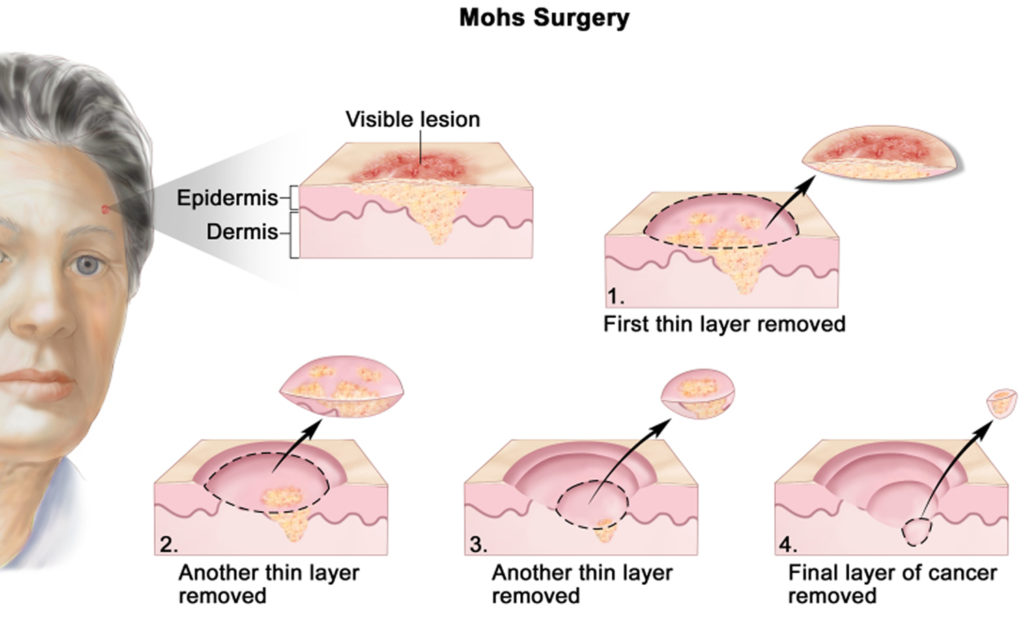Mohs surgery is a specialized procedure for the removal of skin cancers. Dr. Jennifer Hau is a board-certified dermatologist and fellowship-trained Mohs surgeon who performs Mohs surgery at Cypress Dermatology. In this procedure, the skin cancer is excised, oriented, and marked with dyes so that the relative positions of these sections can be identified under the microscope.
If the microscope exam reveals any residual tumor, its precise location will be identified and another layer of tissue will be removed from the patient at the corresponding site. This entire process is repeated until all the excised tissue is free of cancer cells. At this point, the surgical defect will be repaired with sutures.
Mohs Micrographic Surgery has a cure rate of 99% for most skin cancers and allows for the surgeon to remove the least amount of tissue from the patient while obtaining clear margins. This is especially important in cosmetically sensitive areas such as the face, ears, and neck, or more challenging healing areas including the scalp, legs, hands, and feet. Large skin cancers are also often treated with Mohs surgery.
Dr. Hau specializes in skin cancer surgery and if you are interested in having a known skin cancer treated at our office, please have your referring physician send us the referral Here. If you have a lesion you are concerned could be a skin cancer, please schedule a medical appointment with one of our dermatologists to have it examined.
